Original Publication DATE: 11/7/2012
A sequence of five elevated marine terraces along Jug Handle Creek in coastal Mendocino County constitutes a nationally and internationally famous ecological staircase. So outstanding is the combination of canyons, terraces and ancient dunes, tall redwoods and firs, bishop pine forest and dwarfed pines and cypresses that…It has become a Mecca for naturalists, botanists, ecologists, pedologists (soil scientists), geographers and nature-oriented laymen. It is being praised as the best preserved ecological showplace of coastal landscape evolution anywhere in the northern hemisphere.
–Hans Jenny 1973
Throughout the Pleistocene, as the climate fluctuated, sea levels rose and fell in conjunction with the size of the polar ice caps thus allowing oceanic wave-action to cut coastal terraces around the world. Subsequent tectonic forces then slowly pushed these terraces upward. What we now witness in coastal Mendocino County is, as Jenny states, the best preserved ecological showplace of coastal landscape evolution in the Northern Hemisphere.
Through other dynamic processes, beach materials like sand, gravel, clay and other rock have been deposited on the terraces at varied depths. Directly adjacent to the Pacific Ocean on the first step, wind sculpts coastal scrub and grassland on coastal bluffs or “Bonsai” beach and bishop pine forests just inland. A bit further up the staircase, out of reach of the salty air, ample precipitation, Pleistocene and Holocene sand dunes, and deposition of nutrient-rich conifer needles offers the abiotic needs for trees with deep roots and tall shoots. However, the most amazing staircase story begins just to the east of the ancient dunes.
In the mid-section of the second step, and upward on each subsequent step, ancient dunes have cut off surface drainage and flushed perennial moisture onto the step. Via seepage and springs–this moisture has created pooling basins that ever-so-slowly drain. Prolonged seepage leaches nutrients like calcium and potassium from the Pleistocene beach deposits, leaving behind–over long periods of time–sterile hard-pan soils. The year-round leaching, coupled with dry summer heating, nurtures an inhospitable layer called a Podzol Horizon (podzol is a Russian word meaning “ash soil”). This unique soil layer creates edaphic microsites. Certain hardy species–some now endemic–survive in spatial isolation on these podzolized terraces. Mendocino cypress (Cupressus pygmaea), Bolander pines (Pinus contorta spp. bolanderi), and Fort Bragg manzanita (Arctostaphylos nummularia ssp. mendocinensis) are just a few of the unique plants that can be found while exploring the staircases. What follows is a photo journey through the steps and the plants of Jug Handle State Reserve.
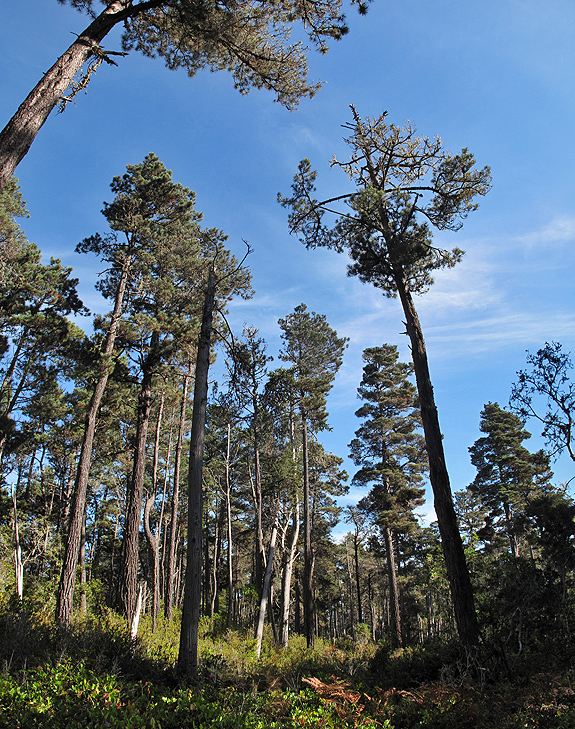
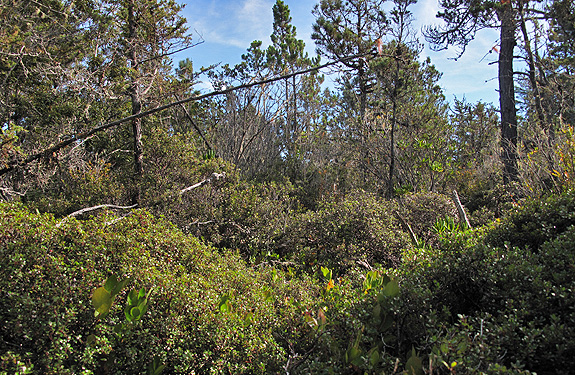
Sources:
- Fox, W. 1976. Pygmy Forest: an ecological staircase. California Geology. 29(1) 1-25. (LINK)
- Jenny, H. 1973. The pygmy forest ecological staircase: A description and interpretation. Monograph University of California, Berkeley, Ca. (LINK)
Other resources:
- Plant List for Jug Handle State Reserve.
- USGS: Landscapes from the waves
COMMENT:
AUTHOR: Fred Overmars
DATE: 5/21/2013 8:00:42 AM
Wonderful description thank you. The link for Hans Jenny’s 1973 publication doesn’t seem to be working – how else might I get a copy? -Fred
Thanks Fred- the link works from my computer. Try right clicking and “save link as” or google the citation. -Michael
—–
COMMENT:
AUTHOR: Fred Overmars
DATE: 10/17/2013 1:56:15 AM
Thanks Michael,
I’ve sought to track it down in New Zealand libraries, but no luck. And I still cant get your link to work (doesn’t for overseas IP addresses?). I’d be delighted if you could email it. The pygmy forest is on my life list – its chronosequence may be esoteric to many but fascinates me. Fred
—–
COMMENT:
AUTHOR: Michael E. Kauffmann
DATE: 10/17/2013 3:26:48 AM
Fred- the pygmy forests are indeed wonderful, and should be on everyone’s life list! I am unclear what you are trying to track down. I did check both links at the end of the blog post and they work for me. Send along more details and I could email the document you are interested in.

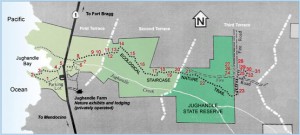
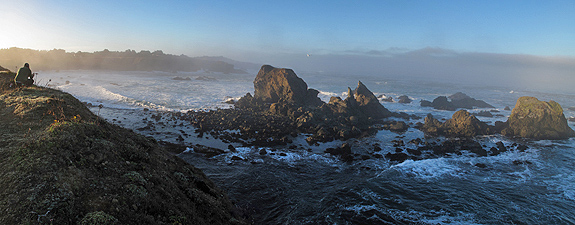
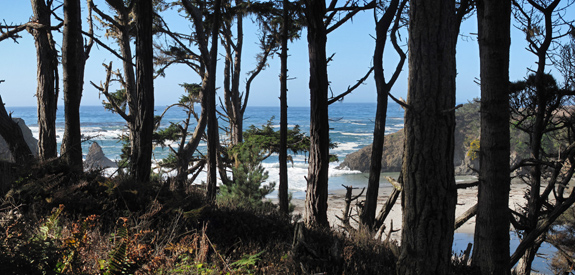
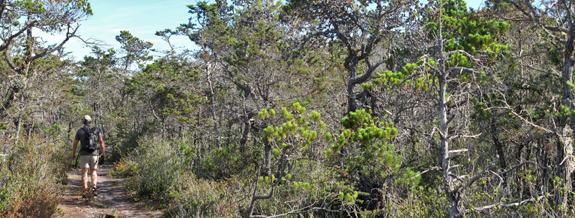
Hi Michael, Thanks for interesting facts about Pygmy Forest. Organizations her on the Mendocino Coast are having an awareness weekend Sept 9.10 and 11. (Find the Magic! Rediscovering our Pygmy Forests!) May we have your permission to use your Ecological Staircase diagram in some of our displays? It’s the best I’ve seen!! Thanks Ruth Sparks (Pygmy Forest Committee, Fort Bragg Garden Club –see: pygmy-forest.com.)
Of course! Click on the image to download the hi-res pdf.
I think you would enjoy reading “A Staircase Through Time” by Bruce Fenson in Pacific Discovery V30, 1977 (A publication of the California Academy Of Sciences).
I can’t find a link but an excerpt can be found at http://pygmy-forest.com/blog/lottiesblog-06.htm & I can sent you a copy of the article if desired.
Thanks Joshua- I look forward to checking it out.